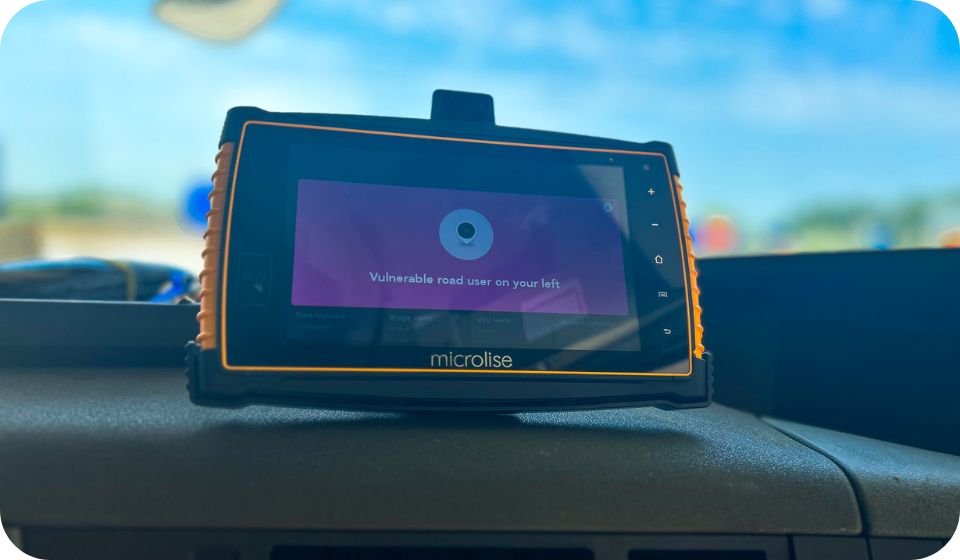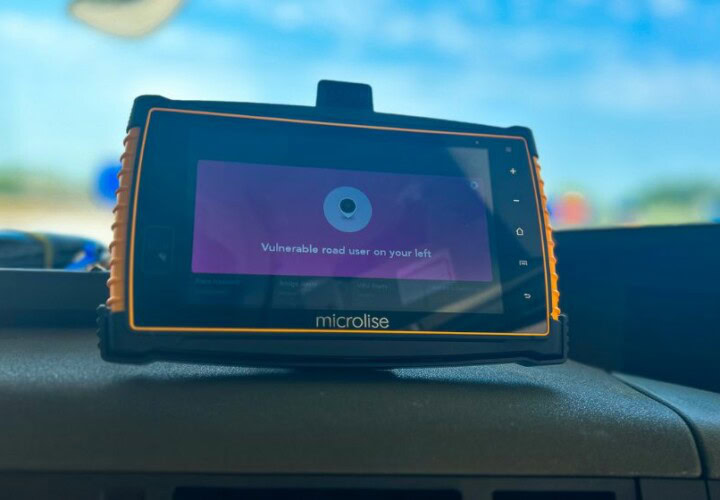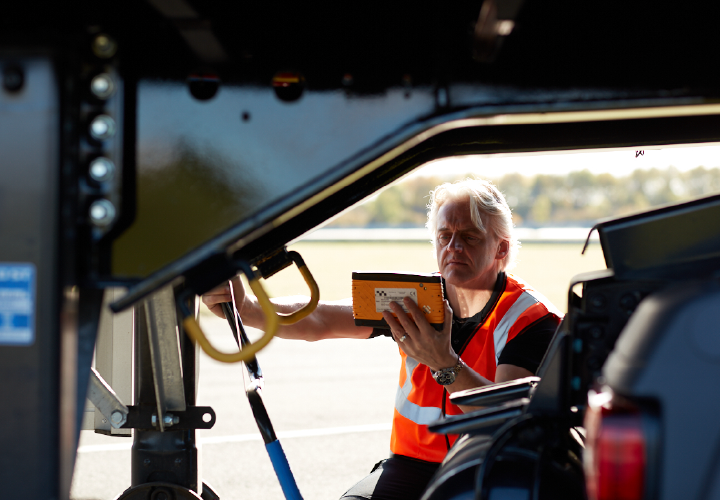In the realm of road safety, technology plays a pivotal role in mitigating risks and enhancing the safety of all road users, including drivers, cyclists, and micromobility users such as e-scooter riders.
Among the innovative solutions designed to improve road safety, Driver Hazard Warning systems stand out as a crucial development.
In our latest blog post, we delve into the essence of Driver Hazard Warnings, shedding light on their types, benefits, and the critical role software plays in integrating these systems into modern road safety measures.

What is a driver hazard warning?
At its core, a Driver Hazard Warning is a sophisticated alert system designed to inform Drivers about potential hazards on their route. This technology aims to enhance road safety by preventing accidents before they occur.
This real-time alert system enables Drivers to be aware of – and react to – various road conditions and obstacles ahead of time. By providing timely notifications, these systems play a pivotal role in reducing the frequency and severity of road incidents, ensuring a safer environment for everyone on the road.
Driver Hazard Warnings fall into two main categories: static and dynamic. While static warnings alert drivers about fixed hazards, such as low bridges and weight restrictions, dynamic warnings provide information about transient conditions, such as road debris or nearby vulnerable road users (VRUs).
Static hazard warnings
Static hazard warnings are designed to alert Drivers about fixed or stationary hazards that are constant and do not change location. They play a crucial role in mitigating risks by alerting drivers to nearby restrictions well in advance to prevent both financial and reputational damages.
These hazards include but are not limited to bridge strikes, weight restrictions and width restrictions.
Dynamic hazard warnings
Dynamic hazard warnings elevate road safety by providing real-time alerts about changing road conditions and moving hazards, such as vulnerable road users (VRUs). This adaptive approach ensures drivers are constantly aware of their surroundings, significantly reducing the likelihood of accidents.
Potential dynamic hazards include – but are not limited to – vulnerable road users (VRUs), weather changes and physical road conditions.
Key benefits for road users
Driver Hazard Warnings are not just beneficial for drivers; they significantly enhance safety for all road users. By providing advance warnings about potential hazards, these systems allow drivers to adjust their speed and manoeuvre accordingly, greatly reducing the chances of collisions with other vehicles, cyclists and micromobility riders.
Moreover, in busy urban environments or at intersections, where the interaction between vehicles and VRUs is frequent, these warnings are invaluable in preventing accidents. Other key benefits include:
Enhanced situational awareness
Driver hazard warnings equip drivers with critical information about their immediate driving environment, allowing for enhanced situational awareness. This is particularly important in complex driving scenarios such as merging lanes, navigating busy intersections, or driving in adverse weather conditions.
The advanced notice helps drivers prepare for potential hazards ahead, adjust their driving strategy, and remain vigilant.
Prevention of collisions
By providing timely alerts about static and dynamic hazards, these systems enable drivers to adjust their speed and manoeuvre safely around potential threats. This proactive approach significantly decreases the chances of collisions with other vehicles and VRUs.
In busy urban areas, where the density of cyclists and micromobility riders is higher, these warnings are particularly beneficial in avoiding incidents that could lead to severe injuries or fatalities.
Smoother traffic flow
Driver hazard warnings contribute to smoother traffic flow by preventing the sudden stops and starts often caused by unexpected road conditions or hazards. Efficient traffic flow is crucial for reducing vehicle emissions and improving the overall efficiency of road networks.
By minimising disruptions, these systems help maintain a steady pace of traffic, which is less likely to create bottlenecks or contribute to traffic jams.
Reduction in traffic-related stress
Knowing what to expect on the road can significantly reduce the stress levels of drivers. Driver hazard warnings provide peace of mind by alerting drivers to potential problems before they encounter them, allowing for a more controlled and stress-free driving experience.
This is particularly valuable in high-pressure driving situations such as rush hour or in poorly lit conditions where hazards may not be immediately visible.
Increased protection for vulnerable road users
VRUs, such as cyclists, motorcyclists and micromobility riders, benefit immensely from driver hazard warnings. These systems alert drivers to the presence of VRUs, especially in conditions of poor visibility or when VRUs might be in the vehicle’s blind spots.
Increased awareness helps drivers to be more cautious, reducing the risk of accidents involving these groups, who are typically at greater risk of injury in road incidents.
Education and behavioural change
Over time, the consistent use of driver hazard warnings can educate drivers about common hazards and potentially dangerous locations on their regular routes. This knowledge can lead to long-term behavioural changes, with drivers becoming more cautious and prepared as they approach known problem areas, further enhancing road safety for themselves and others.
The role of software in enhancing driver hazard warnings
The integration of software in enhancing Driver Hazard Warning systems is a significant development in fleet operations and overall road safety. As technology evolves, software platforms play an increasingly crucial role in managing and sharing important information that helps prevent accidents and ensures smoother traffic operations.
This technology leverages a variety of features to improve the effectiveness and adaptability of hazard warnings, including:
Real-time alerts
Modern software platforms enable the delivery of real-time alerts to Drivers, warning them of potential hazards along their route. This immediate communication is vital for allowing enough time to react appropriately, whether it means slowing down, rerouting, or preparing for abrupt changes in road conditions.
Vehicle profiling
Software systems can store and manage profiles for different types of vehicles within a fleet. This capability is crucial because it allows the system to tailor warnings based on the specific attributes and limitations of each vehicle, such as height and weight. Such information helps prevent accidents related to the vehicle itself, such as bridge strikes.
Enhanced road visibility
Advanced software solutions enhance road visibility by integrating data from various sensors and cameras fitted in and around the vehicle. This integration provides a comprehensive view of the vehicle’s surroundings, including blind spots and distant obstacles, making it easier for drivers to navigate complex environments safely.
Protection for vulnerable road users (VRUs)
These platforms often include features specifically designed to protect VRUs such as cyclists, motorcyclists and micromobility riders. By integrating with external data sources, software can alert drivers to the presence of VRUs, particularly in urban areas where interactions are frequent and potentially hazardous.
Customisation of alerts
One of the most significant benefits of using software in driver hazard warning systems is the ability to customise alerts according to specific operational needs and preferences. Fleet operators can configure the system to prioritise certain types of warnings or adjust the sensitivity of alerts based on factors such as weather conditions, the time of day, or traffic patterns.
This customisation ensures that drivers receive relevant and actionable information, reducing the risk of alert fatigue.
Data integration and analytics
Software platforms typically offer robust analytics capabilities, allowing fleet managers to analyse incidents and identify trends in hazard occurrences. This data can be invaluable for improving safety protocols, planning safer routes, and conducting targeted driver training programs. Analytical insights help in refining the system’s accuracy and relevance, further enhancing road safety.
The impact of software on road safety
By integrating sophisticated software solutions, fleet operators can significantly enhance the safety and efficiency of their operations.
Driver hazard warning systems that are supported by advanced software not only protect Drivers and vehicles, but also contribute to the broader goal of making roads safer for all users.
Technology exemplifies how digital innovation can be used to create a safer and more informed driving environment, ultimately reducing the number of road accidents, and enhancing the overall traffic management system.






